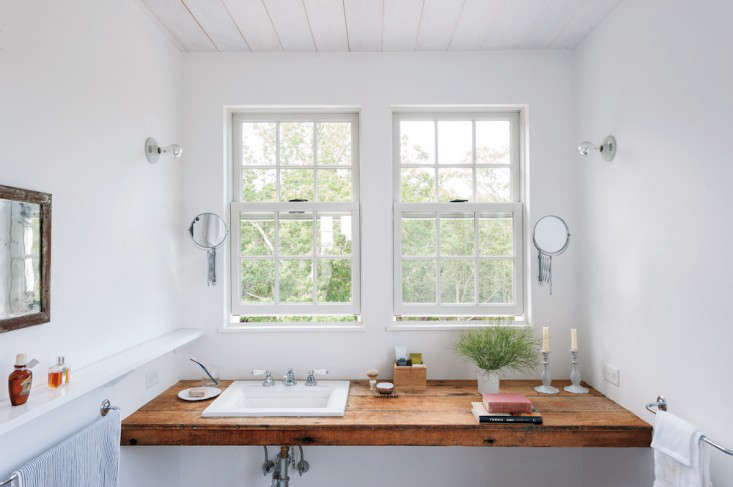
Where to Locate Electrical Outlets, Bath Edition: Remodeling 101 - Remodelista
Bathrooms may be small, but their power needs aren’t. Here’s the key to finding that perfect balance between utility and aesthetics when powering up your bath. Photograph by Matthew Williams. In architect Sheila Narusawa‘s Cape Cod bathroom, electric outlets are placed on both sides of the counter, eliminating the problem of cords snaking across the sink and allowing two users of small appliances to share the space. See the whole house in the Remodelista book. 1. Know electrical code rules and restrictions. The first step is to educate yourself about the requirements and restrictions defined by the International Residential Code, National Electrical Code (NEC), and any local codes. The good news is that the rules primarily focus on the minimum requirements for outlet placement (by number of feet between outlets and from corners, etc.). A single Bocci 22 outlet inset into a bathroom wall.hotograph of a Remodeling 101: The Surprising Appeal of Flush Electrical Outlets. Outlet placement and number are important considerations. For instance, do you have two teens who are likely to be running hair dryers at the same time? What electrical appliances do you use in the bathroom? A pet peeve of mine are hotels that place outlets where the hair dryer can’t reach the mirror. Where will devices with cords need to reach? A well-placed outlet in Rehab Diary: A Spare Bedroom Turned Glam Master Bath; photograph by Sarah Sherman Samuel. Do you have bathroom appliances that charge while not in use? Toothbrushes, shavers, and electric skin cleaners are a few items that work cord-free but require outlets to charge while not in use. Consider placing power sources inside appliance storage areas to keep your counter clutter-free. Photograph by Matthew Williams for Remodelista. Remodelista editor in chief Julie Carlson’s favorite detail in her custom medicine cabinet is its built-in niche for an electric toothbrush. While code dictates distances from the sink, it offers flexibility on the height of outlet placement. Do you use phones and tablets in the bathroom? As the smartphone stands in for music system, news source, and communication central, charging electronics in the bathroom is a reality. Plan accordingly: you may want to install an outlet in the baseboard near the toilet or on an easily accessible dry shelf, for example. 3. Plan with aesthetics in mind. Small details have a large impact in bathrooms. When planning outlet placement, there are three paths to take: conceal, camouflage, or complement. Outlets installed at the back of bathroom drawers are convenient for hidden hair-dryer power. Photograph by Francesca Connolly for Remodelista. Hiding outlets doesn’t have to be complicated, but it does require advance planning. Power strips installed in cabinets are perfect for charging and using bathroom appliances. Outlets that fade into the background reduce visual clutter and improve the overall look of the bathroom. Other tactics: Lay outlets on the horizontal or run them with the grout lines in tiled backsplashes to minimize their profile. Loading Dock 5 Architects of New York City specked a mirrored outlet cover that integrates the power source into the bathroom mirror in their Broome Street Loft design. Photograph by Sean Slattery. Placed for convenience, a white outlet is oriented horizontally to fit the flow of the tile in the bathroom of a Brooklyn brownstone renovated by Elizabeth Roberts, a member of the Remodelista Architect/Design Directory. Another approach is to highlight electrical outlets, using them as a design element in the space. Black vintage-style Push-Button Light Switches pair with outlets in a small bathroom by Jessica Helgerson Design, in Portland, Oregon. Photograph by Lincoln Barbour. 
